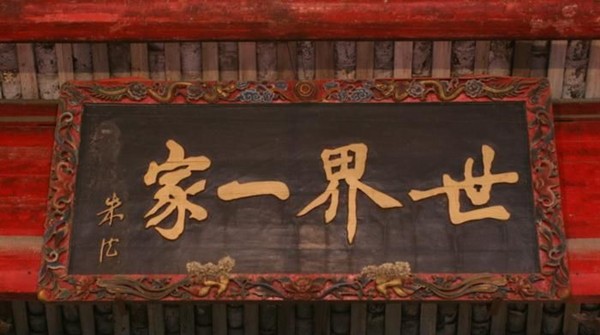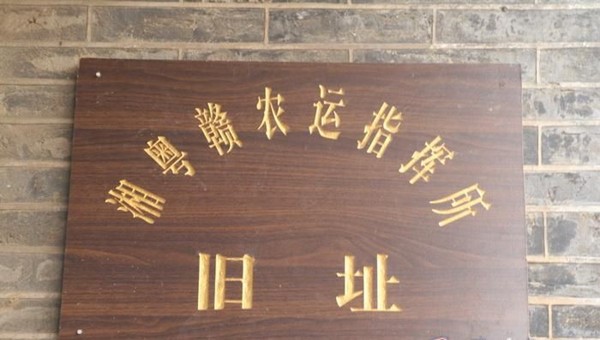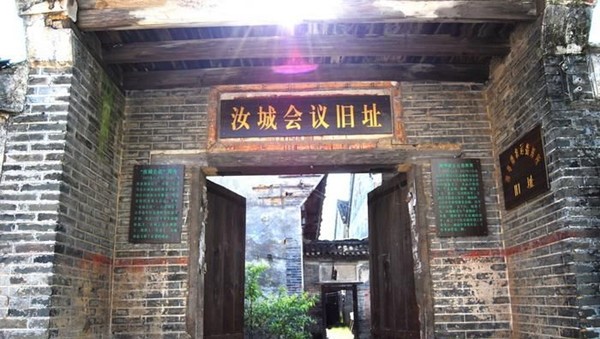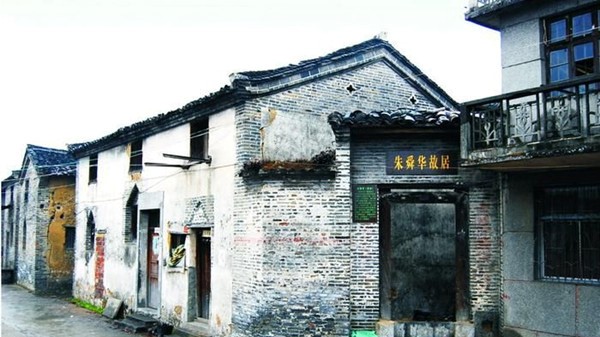Rucheng Jinjiang Red Ancient Village
Located in the south of the suburbs of Rucheng County, the Jinjiang Red Ancient Village was built in the Tang Dynasty, surrounded by East Spring Water and Jinjiang Water. After thousands of years of reproduction, there were 805 inhabitants and 3095 people, including 51 courtyards in the Qing Dynasty, 85 courtyards in the Republic of China, 1 school in the Qing Dynasty, 3 ancient bridges, 12 ancient lanes and 23 ancient tablet inscriptions, which was one of the most famous ancient villages in Rucheng County.
Jinjiang Red Ancient Village is one of the key red tourist attractions in Chenzhou City. There are more than 180 residential courtyards built in the Ming and Qing Dynasties, which are large in scale and connected with each other, including seven ancestral temples and eight halls. The whole scenic spot includes the Origin Memorial Hall of Xiang Nan Uprising, the Old Site of Command Post of Hunan-Guangdong-Jiangxi Peasant Movement, the Old Residence of Zhu Ziqi, the Old Cooperation Site of "Zhu De and Fan Shisheng", the Old Site of "Rucheng Conference", the Former Residence of Zhu Shunhua, the Jinjiang Ancient Ancestral Temple and the Jinjiang Ancient Folk Residence. Each scenic spot bears an extraordinary history.

The "Origin Memorial Hall of Xiang Nan Uprising" was set up to commemorate the planning and preparatory activities of Zhu De and Chen Yi during their stay in Jinjiang in January 1928.
In 2013, the "Old Site Group of Xiang Nan Uprising" located in Jinjiang Village including 2 former sites of the Special Committee of the Communist Party of China in Rucheng, and the Rucheng Conference, 9 ancient ancestral temples and 3 sites of the Rucheng Embroidery Workshops were included in the national key cultural relics protection units.

Since ancient times, Jinjiang Ancient Village has enjoyed splendid cultural activities, outstanding people, especially more than a dozen ancient ancestral temples, dozens of ancient residential courtyards with different styles, and dozens of river and pebble ancient roads interweaving vertically and horizontally, which reveal profound cultural connotations everywhere. The Zhu's Family Ancestral Temple in Jinjiang is the general ancestral temple of the whole village, which was built in the Ming Dynasty. The gold inscription of "We Are The World" presented by Zhu De hangs on the cross-brackets.
Jinjiang was also a place where revolutionaries such as Zhu De and Chen Yi fought and lived. In 1927, Zhu De led the rest of the Nanchang Uprising to Guangdong, Jiangxi and Hunan, and then to Rucheng, and stationed in the ancestral temples and major courtyards of Jinjiang. With the help of the volunteers in Jinjiang, they made a great effort to complete the turning point from weak to strong. So far, these precious revolutionary old sites are well preserved in Jinjiang.

The "Old Site of Command Post of Hunan-Guangdong-Jiangxi Peasant Movement" was formerly the Command Post of Peasant Movement. From August 1926 to July 1927, more than 10 counties of Hunan-Guangdong-Jiangxi Provinces gathered in Rucheng to carry out the peasant movement, and set up the Special Working Committee of CP stationed in Rucheng, Military Committee of Southern Hunan and Second Division of the Revolutionary Army of Workers and Peasants, which were the activity centers and commands.

The picture above is the Old Cooperation Site of "Zhu De and Fan Shisheng". In November 1927, Zhu De led the Nanchang Uprising Army from Shangbao in Jiangxi Province to Rucheng, and negotiated with Fan Shisheng, Commander of the 16th Army of the Kuomintang here, in Jinjiang Chuneng Primary School and other places to establish a united front against Chiang Kai-shek.

The picture above is the "Old Site of "Rucheng Conference". In November 1927, in order to plan the uprising in southern Hunan, Zhu De and Chen Yi secretly held a meeting of the leaders of Party organizations in Southern Hunan and Northern Guangdong in Hengyong Guild Hall of Rucheng and Jinjiang Village, historically known as "Rucheng Meeting", which made necessary preparations for the Xiang Nan Uprising politically, organizationally and militarily.

The picture above is the Former Residence of Zhu Shunhua (Zhang Qiong). Zhu Shunhua (1902-1981), revolutionary and educator, engaged in revolutionary activities under the pseudonym of Zhang Qiong and lost six relatives successively for the revolution. In October 1922, Mao Zedong introduced her to join the Communist Party of China, who was the first person to recommend Mao Zedong to go to Jinggangshan Mountain. Although she was a successful minister of revolution, she devoted herself to education in Shanghai after liberation.




